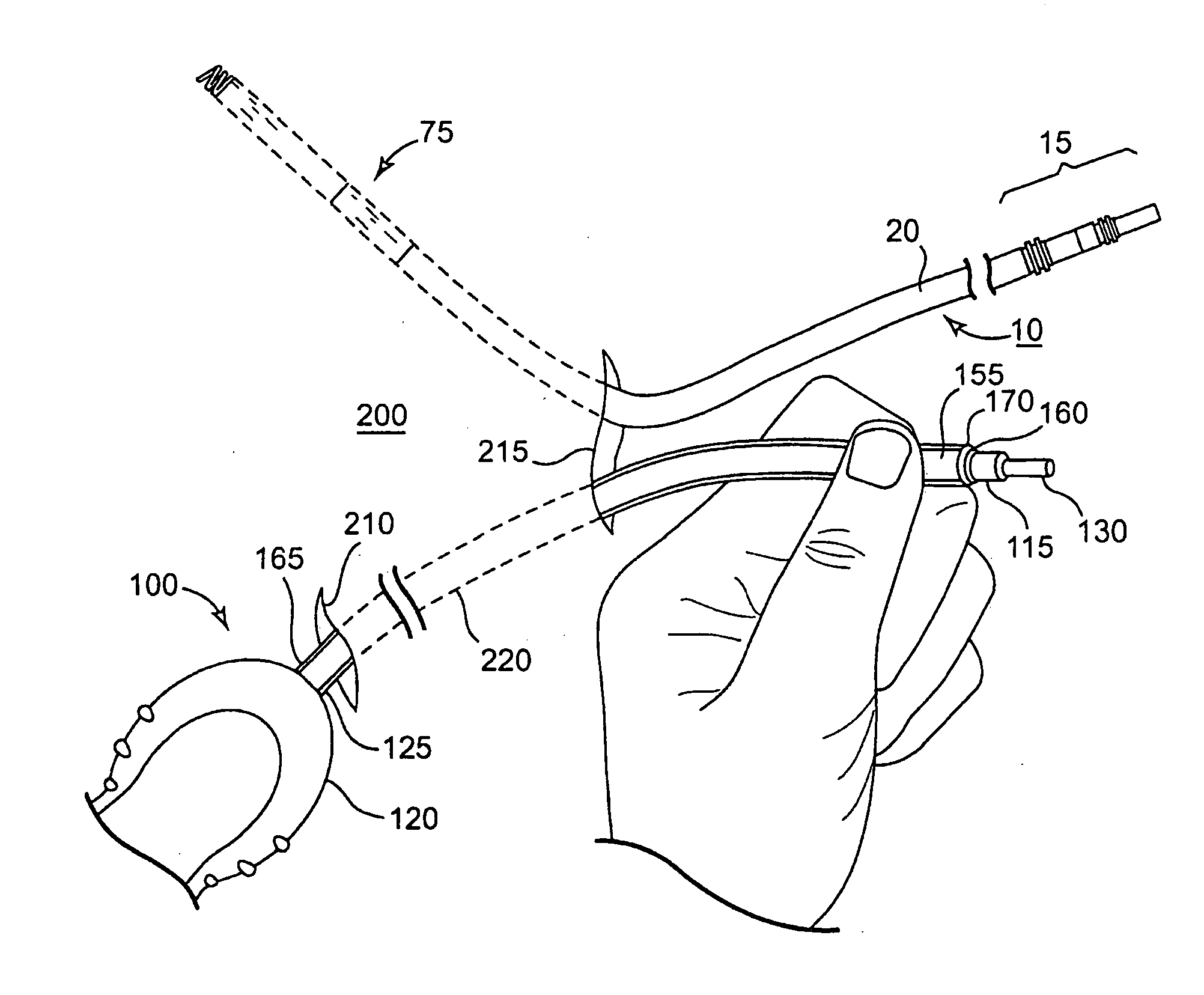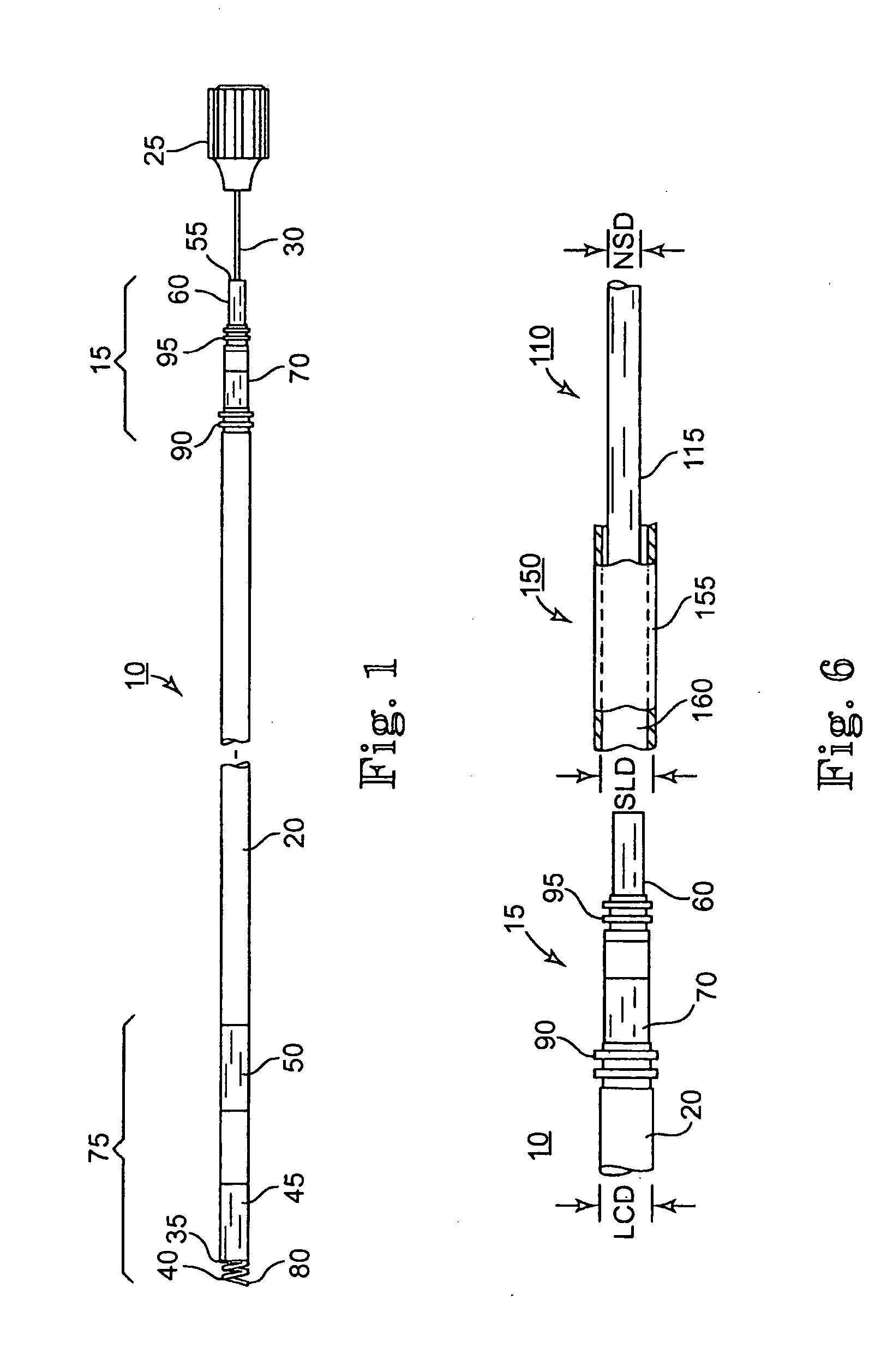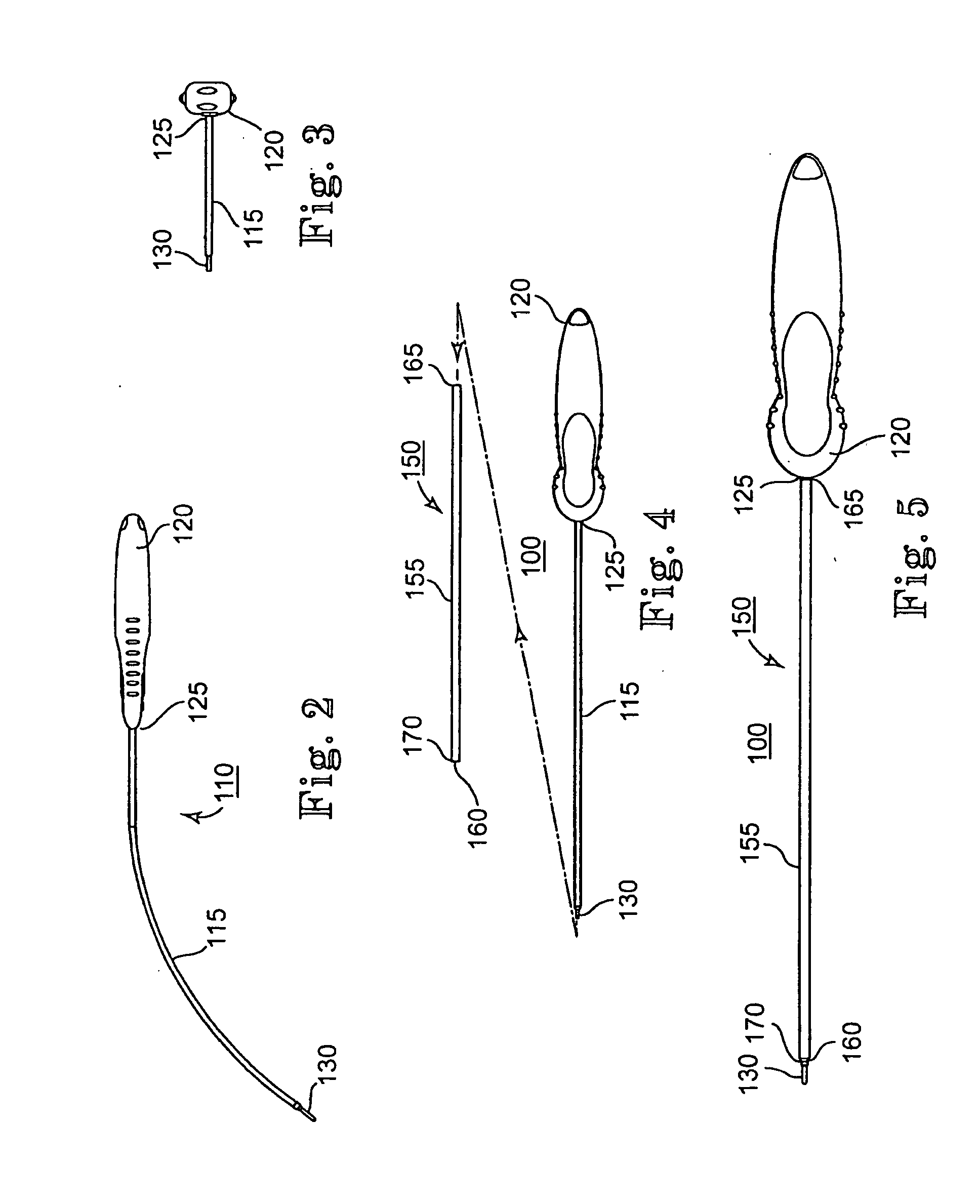Systems and Methods for Implanting Medical Devices
a medical device and system technology, applied in the field of systems and methods for implanting medical devices, can solve the problems of inability to easily stimulate chronic stimulation, electrode placement and on-going stimulation, and weakness or inability of pelvic muscles to hold back urinary flow from the bladder, so as to enhance frictional engagement with the lead connector
- Summary
- Abstract
- Description
- Claims
- Application Information
AI Technical Summary
Benefits of technology
Problems solved by technology
Method used
Image
Examples
Embodiment Construction
[0060]Various features and aspects of the present invention may be practiced separately or in combination and may find application in the positioning and fixation of medical electrical leads in various parts of the pelvic region to treat various pelvic disorders of male and female patients. In either male or female patients, the same or similar tunneling instruments and procedures may be employed in subcutaneously routing lead bodies of medical electrical leads.
[0061]An exemplary medical electrical lead that may be implanted employing the implantation tools, kits, systems, and methods of the present invention and coupled to a tissue stimulation IPG is depicted in FIG. 1. Exemplary tunneling instruments or tools used in and steps of implanting an exemplary medical electrical lead and coupling the lead connector to a tissue stimulation IPG are depicted in FIGS. 2-5. Particular steps in the implantation procedure and variations of the tunneling instruments, kits, systems, and methods o...
PUM
 Login to View More
Login to View More Abstract
Description
Claims
Application Information
 Login to View More
Login to View More - R&D
- Intellectual Property
- Life Sciences
- Materials
- Tech Scout
- Unparalleled Data Quality
- Higher Quality Content
- 60% Fewer Hallucinations
Browse by: Latest US Patents, China's latest patents, Technical Efficacy Thesaurus, Application Domain, Technology Topic, Popular Technical Reports.
© 2025 PatSnap. All rights reserved.Legal|Privacy policy|Modern Slavery Act Transparency Statement|Sitemap|About US| Contact US: help@patsnap.com



